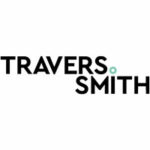-
What kinds of incentive plan are most commonly offered and to whom?
The types of plans offered and the recipients of awards will vary with the maturity and industry of the issuing company and whether the issuer is taxed as a corporation for US tax purposes or as a “pass-through” such as in the case of a partnership or a limited liability company (“LLC”).
The status of a non-US entity that is treated as a corporation in a foreign jurisdiction does not assure tax treatment as a corporation in the US. US Treasury regulations contain default classifications. Certain entities may be able to affirmatively elect their US tax classification by filing a Form 8832 with the US Internal Revenue Service (“IRS”) to override the default classification.
Established companies whose shares trade on a US stock exchange usually issue restricted stock units (“RSUs”) or a combination of RSUs and stock options. However, the usage of stock options continues to decline in favour of RSUs. For executives, the RSUs will often have performance conditions in which case the awards are referred to as performance stock units (“PSUs”). Some high-growth public companies such as biotechs will continue to issue only stock options.
Many US private companies are organized as LLCs which issue rights to future appreciation in the company known as “profits interests.” Private companies organized as corporations will issue restricted stock, stock options, or use “phantom awards” (i.e. cash-settled awards).
While some start-ups, high-tech companies, and biotechs offer equity broadly to a substantial percentage of employees and many consultants, except for publicly-traded companies (which offer employee stock purchase plans) most mature companies, companies in other industries, and LLCs confine equity awards to executives and key managers of the company.
This chapter will focus mainly on equity awards issued by entities taxed in the US as corporations.
-
What kinds of share option plan can be offered?
Most US share incentive schemes are “omnibus” plans in that they permit the company’s compensation committee of the board of directors to grant restricted stock, RSUs, PSUs, stock appreciation rights (“SARs”), and stock options.
Stock options may be issued as incentive stock options (“ISOs”) or nonqualified stock options (“NQSOs”).
ISOs are subject to strict statutory limitations and conditions on plan and award features such as participant eligibility (employees only), award size (no more than USD100,000 of grant value may become first exercisable in any one calendar year), time limits on exercising (generally ISOs must be exercised within 3 months of termination of employment), and a requirement that the plan be approved by shareholders. ISOs may only be granted by corporations.
NQSO are more commonly issued than ISOs and are not subject to such limitations and conditions.
When any equity awards are granted by a US publicly-traded corporation the plan must be approved by shareholders under US stock exchange listing requirements, except for certain inducement grants that may be made outside of a formal plan to new employees without shareholder approval, but subject to issuance of a press release.
-
What kinds of share acquisition/share purchase plan can be offered?
Companies that are publicly-traded in the US usually offer most US employees the opportunity to purchase shares at a discount with after-tax payroll deductions through an employee stock purchase plan (“ESPP”) that complies with Section 423 of the US tax code. Such plans customarily have offering periods of 6 or 12 months during which time funds are accumulated for the purchase of company stock, usually at the lower of 85% of fair market value at the beginning or end of the offering period. Purchases must be capped at USD25,000 per calendar year. ESPPs may be offered only by a company that is taxed as a corporation, including an LLC which makes an election to be taxed as such. ESPPs must be approved by shareholders.
Private corporations rarely offer ESPPs. They may, however, allow executives to purchase restricted stock.
-
What other forms of long-term incentives (including cash plans) can be offered?
In lieu of granting NQSOs, companies sometimes grant SARs. SARs provide the same economic benefits of an NQSO but do not require a participant to tender the exercise price. SARs can be capable of being settled in shares or cash.
Phantom share plans are popular with private companies where the owners do not wish to give employees voting rights or access to books and records. In such cases, employees will obtain the economic benefits of any share appreciation as if they were owners of common (ordinary) shares, but the awards will be settled in cash.
Private equity-backed portfolio companies (often organized as LLCs) usually award profits interests.
Private companies may also provide cash bonuses payable upon a sale or other exit event.
-
Are there any limits on who can participate in an incentive plan and the extent to which they can participate?
Generally, US incentive plans may be extended to employees, consultants, independent contractors, and directors (executive and non-executive directors) but not to those engaged primarily in capital-raising activities on behalf of the company.
ISOs and ESPPs, however, may only be offered to employees of entities that are taxed as corporations.
ESPPs must adhere to certain non-discrimination rules. ESPPs must allow all employees of a participating employer to subscribe for shares except that there may be excluded (i) employees who have been employed less than 2 years, (ii) employees whose customary employment is 20 hours or less per week, (iii) employees whose customary employment is not for more than 5 months in any calendar year, and (iv) highly-compensated employees (those earning USD160,000 or more in 2025).
-
Can awards be made subject to performance criteria, vesting schedules and forfeiture?
Yes. US equity awards are universally subject to time-based vesting schedules and forfeiture provisions, and often to performance criteria. (When reference is made in this chapter to “vesting,” it is understood that the term refers to the lapsing of a “substantial risk of forfeiture” under US tax laws meaning that the participant no longer is required to perform substantial services to retain the right to the award and that any performance condition has been satisfied.)
The equity incentive plans of US public companies allow for the grant a mix of award types (e.g., stock options, restricted stock, and RSUs) but awards for senior executives are heavily weighted toward PSUs. PSUs vest over time, but performance thresholds such as those based upon relative total shareholder return (“TSR”) and/or financial metrics (such as return on invested capital or earnings) must also be reached for a pay-out to be made. Most US public companies rely on two or more performance metrics and assess them over a three-year performance period. Awards are usually made annually. TSR vesting is usually based upon relative performance with respect to a peer group of companies or an applicable stock index.
Vesting of awards at private companies is usually time-based, but some private companies require an exit event such as a sale or initial public offering for an equity award to vest. Private equity-backed companies typically require an exit event for participant liquidity with a substantial portion of equity granted to senior managers subject to the attainment of a pre-established multiple of invested capital and/or an internal rate return threshold for vesting.
Share rights and shares are typically subject to forfeiture in the US upon termination of employment prior to satisfaction of time-based and/or performance-based vesting conditions. A participant’s rights to shares that do not vest because a time-based or performance-based condition is not satisfied will lapse.
In addition, awards may be subject to forfeiture for violation of restrictive covenants (such as soliciting clients of a former employer) or if the participant’s employment is terminated by the employer for certain bad acts or omissions sometimes referred as a “for cause” termination. Forfeiture provisions are governed by state law, the provisions of the plan, grant agreements as well as employment agreements and separate non-disclosure/non-compete agreements.
However, many states limit or prohibit former employers from enforcing agreements with former employees to not engage in competition with the employer or to solicit the former employer’s employees or customers. The list of states limiting or prohibiting restrictive covenants grew in 2024 to include 40 states. A few states ban restrictive covenants outright with possible exceptions for owners selling material interests in businesses. Some states prohibit employers from imposing non-competes on certain employees based upon factors such as age, exemption from overtime wage payments, and pay levels. Some states have industry-specific exclusions such as health care providers. Other states have temporal limitations or require advance notice from the employer at the offer letter stage.
Where permitted, such restrictive covenants must be reasonable in scope, geographic limitation, and duration.
In 2024 the US Federal Trade Commission (“FTC”) issued a regulation that broadly banned non-competition and non-solicitation agreements throughout the US on the basis that such restrictive covenants are anti-competitive and unfairly restrict trade. The FTC ban was set aside by US federal courts. It is unlikely that the FTC will continue to pursue an appeal due to the change in Presidential administrations.
A key issue under state law is whether instead of prohibiting the former employee’s competitive activities it is permissible to cause a forfeiture or clawback of equity awards for violation of the restrictive covenants. If so, the question also arises whether the conditions of any such employee choice are subject to the more rigorous “reasonableness” test for restrictions that bar future business activities. In 2024 the Delaware Supreme Court ruled that at least under Delaware law, the “employee choice doctrine” is permissible and subject only to the same scrutiny as any other standard contractual term.
-
Can awards be made subject to post-vesting and/or post-employment holding periods. If so, how prevalent are these provisions both generally and by reference to specific sectors?
Although not a common practice in the US, it is possible to delay the delivery of vested shares that are subject to an equity award. The main concern in doing so is whether the deferred delivery postpones the timing of taxation to the date of receipt of the shares.
It is possible to structure an award as an RSU or PSU that is subject to (a) time-based and/or performance-based forfeiture conditions, and (b) a contractual stipulation that the shares will not be delivered until a stated anniversary of the date of grant or vesting. For example, an award could have a three-year vesting schedule measured from the grant date with any earned shares delivered five years after the date of grant. The earned shares will typically be subject to taxation at vesting with the net after-tax shares being delivered at the later date.
Care must be taken should a company desire to defer delivery of the shares until termination of employment or beyond. In some instances, the systematic deferral of compensation to termination of employment or beyond could be viewed as a “deferred compensation plan” that could unwittingly become subject to a US pension law known as “ERISA” that is designed to regulate employer sponsored retirement plans. There are techniques to avoid the application of most aspects of ERISA which are beyond the scope of this chapter.
Rather than imposing post-vesting and/or post-employment holding periods, most US public companies require senior executives to hold a multiple of their base salary (generally 6x for the CEO and 3x for other named executive officers) in company stock at all times. Some companies require senior executives to hold a stated percentage of vested awards (e.g., 50% of the net after-tax award).
According to a 2023 industry survey by the National Association of Stock Plan Professional and Deloitte Consulting, only 10% of US public companies impose a post-vesting holding period on shares acquired through an ESPP. Data on minimum holding periods in the US on other types of equity awards is limited. Anecdotally, , the percentage of US public companies adopting mandatory holding periods after vesting for LTIP awards is growing as it helps executives achieve their stock ownership guidelines, facilitates clawbacks, improves corporate governance ratings from proxy advisory firms, and reduces the financial accounting expenses of equity awards. Of course, there is a trade-off in that mandatory holding periods can hurt employee acquisition and retention if the terms are too onerous.
Except for ESPPs, rarely are post-vesting holding periods imposed on employees below the C-suite or direct reports to the chief executive officer.
-
How prevalent malus and clawback provisions are and both generally and by reference to specific sectors?
Malus and clawback provisions are common in the US but they are collectively referred to in the US by the single term “clawback.”
The SEC promulgated final regulations that required companies (including foreign issuers) with equity or debt listed on the NYSE or Nasdaq stock exchanges to adopt a clawback policy by December 1, 2023 to recover from all current and former Section 16 officers excess incentive-based compensation earned during the three fiscal years preceding the date on which the company is required to prepare a financial restatement to correct an error without regard to fault, fraud or misconduct. Importantly, the final regulations are more expansive than the SEC’s prior proposed clawback regulations and require clawback for errors that are generally referred to as “revision restatements” or “little r restatements” because they are not material to and do not result in the withdrawal of affected prior period financial statements.
The clawback requirements apply to any compensation that is granted, earned, or vested based wholly or in part upon the attainment of any “financial reporting measure” such as revenue, income, return on invested capital, or total shareholder return. Clawback need not apply to base salary, fully discretionary bonuses, time-based only equity compensation, or equity awards where vesting is based solely upon strategic or operational measures.
The SEC regulations require public companies to disclose their clawback policies as exhibits to the Form 10-K and to disclose in the proxy statement significant details regarding restated financials and efforts to recover erroneously-paid incentive compensation.
Companies also apply clawback policies to ethical misconduct without a financial restatement and sometimes for the violation of non-compete agreements, creating unacceptable reputational risk, or failing to supervise others.
Increasingly, companies are relying upon forfeiture of existing awards that have been earned but remain unpaid (rather than recoupment of paid awards) as a starting point because the potential adverse tax consequences to executives and restrictions imposed at the state-level on off-setting wage payments make applying a clawback to previously settled awards complex. There are open questions about when an unvested award may be used for clawback.
Except perhaps for the financial services firms, the usage of clawback policies in the past did not seem to vary much by industry. Now, all public companies must follow the new SEC clawback rules.
-
What are the tax and social security consequences for participants in an incentive plan including: (i) on grant; (ii) on vesting; (iii) on exercise; (iv) on the acquisition, holding and/or disposal of any underlying shares or securities; and (v) in connection with any loans offered to participants (either by the company operating the incentive plan, the employer of the participant (if different) or a third party) as part of the incentive plan.
(i) on grant;
No income or social security consequences at grant.
(ii) on vesting;
No income tax consequences upon vesting for stock options (NQSOs and ISOs) or SARs, as long as the award was granted with an exercise price equal to or greater than fair market value of the shares at the date of grant. Note that “fair market value” for US tax purposes may not be the same as fair market value or market value in other countries.
Nil-cost, nominal-priced, and discounted stock options are not taxed at vesting if the options are only exercisable until March 15th of the calendar year following the calendar year in which the option (or tranche) first becomes exercisable, or if later the 15th day of the third calendar month following the fiscal year of the employer in which the option (or tranche) first becomes exercisable. Consideration should be given to providing for automatic exercise of nominal-priced stock options upon vesting to avoid concerns that the option gain may be available in more than one tax year thus raising the possibility that the option holder is in “constructive receipt” of income (i.e. the funds are made available to the participant to draw upon).
RSUs are not subject to income taxation at vesting but are subject to Social Security and Medicare taxes upon vesting.
A participant owes the employee portion of Social Security taxes upon RSU vesting at the rate of 6.2% (2025) until the participant has Social Security wages (e.g., salary, bonus, equity compensation) for the calendar year of USD176,100 (2025).
Medicare taxes are owed by employees upon RSU vesting at the base rate of 1.45% of Medicare wages (2025) with no limit or cap. Higher-income participants (those earning more than USD200,000 (2025) that are single taxpayers or USD250,000 (2025) that are married taxpayers filing joint tax returns) pay an additional 0.9%.
Restricted stock issued by a corporation is subject to ordinary income taxes, Social Security taxes, and Medicare taxes at the date that the award is no longer subject to a substantial risk of forfeiture (i.e.vesting) unless a so-called “Section 83(b) election” was timely made by the participant by filing a statement including IRS-prescribed information with the IRS and the employer within 30 days of grant and including any bargain element in income for that year. If a Section 83(b) election is not made, applicable taxes are calculated by reference to the fair market value of the shares as determined on the vesting date.
The top marginal federal income tax rate is 37% (as of January 2025).
Profits interests granted in LLCs are taxed at vesting in a manner similar to restricted stock of a corporation unless a Section 83(b) election is timely made or the requirements of an IRS revenue procedure relating to the taxation of profits interests are satisfied.
ESPP and ISO awards are not taxed until the acquired shares are sold.
(iii) on exercise;
NQSOs are taxed upon exercise. A participant has ordinary income (taxed in the same manner as wages) upon exercise in an amount equal to the “option spread” (i.e. the aggregate fair market value of the option shares at date of exercise over the aggregate fair market value of the option shares at date of grant). The participant also owes Social Security and Medicare taxes on the option spread at exercise.
SARs are taxed upon exercise in the same manner as NQSOs.
ISOs are not taxed for federal income tax purpose upon exercise nor are ESPP awards. Note that in certain situations, a higher earner US taxpayer may owe an “alternative minimum tax” (“AMT”) for the calendar year of ISO exercise.
(iv) on the acquisition, holding and/or disposal of any underlying shares or securities; and
RSUs are subject to income taxation upon payment or settlement. In a 2020 clarification the IRS stated that the amount included in income for an RSU is equal to the fair market value of the shares determined as of the date that the company initiates payment, not the date that the shares are actually deposited in the participant’s brokerage account.
With respect to any type of award, when the resulting shares are sold or transferred the shares are subject to taxation upon their disposition. The amount taxed is the “gain” on the shares (i.e. the excess of the fair market value at disposition over the sum of the amount paid for the shares, if any, and the amount of income previously recognized upon vesting or exercise of the award, as the case may be).
The gain upon sale or transfer is a long-term capital gain if the shares are held for more than 12 months. If the shares are held for a shorter period, the gain is a short-term capital gain. Long-term capital gains are subject to federal income taxes of up to 20% (as of January 2025). Short-term capital gains are taxed at rates equal to ordinary income tax rates.
In addition, upon disposition of the shares a participant who has “adjusted gross income” of USD200,000 (2025) (USD250,000 (2025) for married couples filing joint tax returns) owes a 3.8% “net investment income” tax on any capital gains.
ISOs and ESPPs are taxed differently, although in each case there are tax advantages to holding the resulting shares for periods set forth in the US tax code.
An ISO is taxed upon disposition of the shares. If shares are held at least two years from grant and one year from exercise (a “qualifying disposition”), all appreciation is taxed at long-term capital gains rates. A premature disposition (known as a “disqualifying disposition”) causes the option to be taxed in the same manner as a NQSO in the year of sale of the ISO shares, except that no Social Security or Medicare taxes are due.
An ESPP also requires the participant to recognize income in the year of disposition of the purchased shares.
If the disposition of ESPP shares occurs more than two years after the start of the offering period in which the shares were purchased and more than one year after the actual purchase date, then the participant recognizes ordinary income in the year of the qualifying disposition equal to the lesser of (i) the fair market value of the shares at the time of sale less the purchase price, and (ii) the fair market value of the shares as of the beginning of the offering period less the purchase price. Any difference between the sales proceeds and the participant’s “basis” (purchase price plus amount of ordinary income recognized) is treated as a long-term capital gain.
If the participant fails to satisfy the ESPP holding periods and makes a disqualifying disposition, the participant has ordinary income in the year of sale equal to the fair market value of the shares at purchase less the purchase price. The participant has capital gains (long or short, depending on whether the shares were held for more than 12 months) equal to the sales proceeds less the fair market value of the shares on the purchase date.
Neither ESPPs nor ISOs are subject to taxation for Social Security or Medicare purposes.
It should also be noted that officers, certain shareholders, and highly-compensated individuals may be subject (there are common exceptions) to an additional 20% tax upon a change of control or sale of substantially all of the assets of a corporation under Sections 280G and 4999 of the US tax code if the present value of certain accelerated payments or certain payments contingent upon the transaction equals or exceeds 3 times the average compensation paid to such person during the previously-completed 5 calendar years (the so-called “golden parachute” tax).
(v) in connection with any loans offered to participants (either by the company operating the incentive plan, the employer of the participant (if different) or a third party) as part of the incentive plan.
Loans to purchase company stock are rare at public companies. In fact, public company executive officers are prohibited by law from borrowing money from the issuer.
It is not uncommon, however, for private corporations to lend money to executives to purchase stock when valuations are low such as when the company is in its start-up phase.
To avoid recharacterization of a loan to purchase stock as a stock option (under which all gain on sale would be ordinary income) and to avoid characterization that the loan is compensation, loans are structured (i) with substantial personal recourse to the participant, (ii) with payment of interest at “applicable federal rates” published monthly by the IRS that vary with the duration of the loan (which are generally less than commercial rates) unless the loan is for no more than USD10,000 in which case it may be interest-free, and (iii) without a promise by employer to pay a bonus equal to the loan amount or to forgive the indebtedness.
If funds are lent to purchase shares, the participant usually will make a Section 83(b) election which reflects no income being recognized at that time because the amount paid with the borrowed proceeds equals the fair market value of the shares purchased.
LLCs avoid lending money to participants to purchase equity because equity awards may be granted as profits interests for which the purchase price is nil.
The above tax analysis assumes that any non-US issuer is not a “passive foreign investment company” (“PFIC”) for US tax purposes. PFIC status may arise when an entity has at least 75% of passive income such as investments, or at least 50% of assets that generate passive income or are held for generating passive income.
In addition, it is assumed that for US tax purposes any shares of restricted stock are not freely transferable by the participant prior to vesting.
State and local tax consequences, if any, vary and are beyond the scope of this Guide.
-
What are the tax and social security consequences for companies operating an incentive plan? (i) on grant; (ii) on vesting; (iii) on exercise; (iv) on the acquisition, holding and/or disposal of any underlying shares or securities; (v) in connection with any loans offered to participants (either by the company operating the incentive plan, the employer of the participant (if different) or a third party) as part of the incentive plan.
(i) on grant;
No consequences at grant.
(ii) on vesting;
Upon vesting of restricted stock or a profits interest in cases where a Section 83(b) election has not been timely made, the employer is generally entitled to an income tax deduction equal to the amount of income, if any, recognized by the employee.
RSUs and (unless timely Section 83(b) elections have been made) restricted stock and profits interest awards are subject to taxation at vesting for Social Security and Medicare purposes. Employers owe the employer portion of such taxes which is equal to the amount of Social Security and Medicare taxes paid by employees (described above), except that employers do not owe the additional 0.9% Medicare tax payable by higher-income employees.
(iii) on exercise;
Upon exercise of an NQSO or SAR, an employer is generally entitled to an income tax deduction equal to the amount of income recognized by the employee.
Employers owe the employer portion of Social Security and Medicare taxes (save for the additional 0.9% Medicare tax) when the participant exercises a NQSO or a SAR.
An employer is not entitled to an income tax deduction when an ISO or ESPP option is exercised.
Neither ESPPs nor ISOs are subject to taxation for Social Security or Medicare purposes at exercise or thereafter.
(iv) on the acquisition, holding and/or disposal of any underlying shares or securities;
No taxes are assessed against the employer upon acquisition, holding, or disposal of the shares by the participant.
(v) in connection with any loans offered to participants (either by the company operating the incentive plan, the employer of the participant (if different) or a third party) as part of the incentive plan.
The issuance of bona fide loans with an interest rate equal to or greater than the IRS applicable federal rate does not give rise to income tax consequences for the employer. Noncompliant loans may give rise to employer reporting and withholding requirements.
Note that in the case of RSUs and stock options the tax deduction of a public company for awards made to certain highly compensated individuals is subject to a limitation on the deduction under Section 162(m) of the US tax code.
-
What are the reporting/notification/filing requirements applicable to an incentive plan?
Except for compliance with securities laws of certain US states discussed below, it is not necessary to file the plan with a government regulator or to seek permission from the government to use the plan in the US unless request is made by an authority for a copy of the plan.
It is, however, necessary for a US employer to report income related to plan awards to the IRS, the Social Security Administration (”SSA”) and any applicable state and/or local tax authorities. The resulting income must be reported to participants on a Form W-2, Wage and Tax Statement, shortly after the close of calendar year in which the income-producing event occurs.
Employers are required to furnish an informational report, Form 3921, Exercise of Incentive Stock Option, to participants to whom stock was transferred in the previous calendar year pursuant to the exercise of an ISO. Similarly, employers are required to furnish Form 3922, Transfer of Stock Acquired Through an Employee Stock Purchase Plan, when shares are transferred pursuant to an ESPP. Copies of each form are also sent to the IRS.
Employers have significant tax withholding obligations for equity incentive awards. Whenever a federal tax arises upon vesting, exercise, or settlement of an equity award, the US employer must remit the employee’s and employer’s portions of federal income, Social Security and Medicare taxes to the IRS and SSA, often within 1 business day of the tax event. Form 941, Employer’s Quarterly Federal Tax Return, must be filed to report the amounts withheld.
Of course, publicly-traded companies are subject to voluminous securities law disclosure obligations discussed throughout this chapter.
-
Do participants in incentive plans have a right to compensation for loss of their awards when their employment terminates? Does the reason for the termination matter?
In the US, employees are usually employed “at will” meaning that either the employer or the employee may terminate the employment relationship at any time without prior notice for any reason or for no reason at all. Absent a contractual provision to the contrary (such as in an employment agreement, plan rules, or a grant agreement), any shares that are then unvested will lapse and be forfeited.
Contracts between the employer and the participant may, however, specify that if the termination is by the employer “without cause” or by the employee for “good reason,” then the participant may be entitled to all or a portion of an otherwise unvested equity award.
Regardless of contractual provisions, it is not uncommon for participants to assert that they were terminated by the company, or constructively discharged, for reasons prohibited by law such as discrimination due to age, gender, race, sexual orientation, whistle blower status and the like, and therefore unlawfully deprived of continued vesting of equity and the grant of future awards.
Because the US does not maintain a “loser pays” approach to attorney’s fees, employment litigation thrives.
Many US employers confront this situation by obtaining a release of all employment and compensation claims in exchange for the payment of cash severance benefits.
-
Do any data protection requirements apply to the operation of an incentive plan?
Except for the State of California, there are no specific data protection issues which currently restrict the operation of incentive plans beyond general US and state privacy data transmission obligations developed under common law. While 19 states have enacted data privacy statutes as of the end of 2024 (some of which become effective in 2025), these rules apply to company and consumer relationships, not the employer-employee relationship.
California is the exception. The California Privacy Rights Act of 2020 (“CPRA”) amended the California Consumer Privacy Act of 2018, although full enforcement of the CPRA was delayed until 2024. The CPRA provides California employees, independent contractors, and job applicants with new rights relating to how employers (generally only those with greater than USD25,000,000 in global revenue) collect, disclose, use, share, and store personal data. The CPRA purports to regulate “employment-related information” and “employment benefits” but details remain in flux at the time this chapter was written.
For states other than California, it is recommended that the employee explicitly accept that his or her personal information can be used in accordance with the plan, and that any data transferred not include an employee’s Social Security number. Further, as a best practice, it would be advisable to follow the EU data privacy rules for US participants.
Vendor contracts for plan administration should be reviewed to assess the standard of care and remedies for breach of level of service including data protection.
-
Are there any corporate governance guidelines that apply to the operation of incentive plans?
If an issuer is organized under the laws of a US state (such as Delaware), the company must operate its plan in compliance with that state’s corporation laws. Each state varies, but one of the important governance points is whether shareholder approval of the plan is required (it is always required for public companies, ISOs, ESPPs and often required for plans seeking exceptions from securities registration in California).
State law may also regulate whether and under which circumstances the company’s executives may be delegated the power to make equity awards to non-executive employees on behalf of the company’s compensation committee. Delaware corporation law was amended in August 2022 and again in August 2023 to allow for broader delegation of grant authority under certain conditions and to harmonize the procedures to authorize stock grants and options to purchase stock.
Public companies may only grant equity to executive officers through a properly constituted compensation committee (generally, directors who are “independent” for stock exchange purposes and who satisfy certain other criteria for purposes of Section 16 of the Securities Exchange Act of 1934 (”’34 Act”)). See Q/A 18 below.
In light of stock option “backdating” and other US corporate governance failures, US public companies typically only grant equity at certain regular, pre-established dates throughout the year, avoiding times just before and after earnings releases and outside of periods when material non-public information could affect the grant price. New SEC regulations (see Q/A-24 below) impact the disclosure of stock option grant practices relative to the existence of such non-public information.
-
Are there any prospectus or securities law requirements that apply to the operation of incentive plans?
US federal and state securities laws are complex, including for US private companies and public companies whose shares do not trade on a US stock exchange.
A company whose shares trade on a US Stock exchange customarily will register its plan shares for use under the Securities Act of 1933 (the ”‘33 Act “) on SEC Form S-8 and deliver a prospectus (the terms of which are prescribed by the SEC) to plan participants that describes the main features of the plan and incorporates by reference other previously filed SEC materials. The result is that employees need only be given a summary of the plan’s provisions, a description of the tax consequences of plan participation, a copy of the most recent annual report, and a copy of the plan. No state securities registration filings are necessary when an S-8 is filed.
Companies (other than foreign private issuers who are currently exempt) whose shares are listed on a US stock exchange are subject to burdensome disclosure obligations. For example, equity awards made to Section 16 officers must be promptly disclosed via SEC Form 4 filings. If the terms of those awards differ significantly from previously disclosed forms of grant agreements the company must make that information public shortly after grant on a Form 8-K. In addition to extensive tables and narratives regarding the compensation of “named executive officers” and a lengthy explanation of why the company chooses to pay each element of compensation to its executive officers in the Compensation Discussion & Analysis section of the shareholder proxy statement, public companies must include information for a non-binding shareholder say-on-pay vote, a description of payments that would be made upon termination of employment or a change of control, a compensation committee report, information on the director and officer beneficial ownership of company stock, a disclosure of the ratio of the CEO’s pay to that of the median-paid employee of the company, information regarding stock option grant practices, disclosure of clawback policies, and substantial information about director compensation.
In 2022, the SEC adopted final regulations requiring public companies to disclose the relationship between the compensation “actually paid” (as defined by the regulations) to a company’s named executive officers and the company’s financial performance (sometimes referred to as “PvP”). Among other information, the disclosure includes a table showing the compensation “actually paid,” the total shareholder return (“TSR”) of both the company and its peer group, and a list of at least three of the most important financial measures used by the company to link pay to performance. Further, a company is required to describe the relationship of the amount of compensation “actually paid’ to the CEO and the other named executive officers to the company’s TSR, net income, and the company selected financial measures
Other federal securities laws regulate executive and employee behaviour. Employees and others are prohibited by federal securities laws from trading shares of a public company on the basis of material non-public information (“MNPI”). New regulations were issued by the SEC in late 2022 (generally effective on February 27, 2023) to more closely regulate the use of so-called “Rule 10b5-1 plans” which allow employees of public companies to trade shares under certain circumstance when in possession of MNPI.
Officers and directors of US public companies are also subject to the so-called “short-swing profits” rules of Section 16 of the ’34 Act. This rule provides for the recovery by the company (enforced by plaintiffs’ lawyers) of any profit realized on matched purchases and sales, or matched sales and purchases, of company shares within a period of less than six months. No showing of officer or director knowledge of wrongdoing is required, but the grant of an equity award may be exempted from matching by a duly constituted compensation committee. See Q/A-18 below.
Senior executives of public companies must sell their shares in accordance with SEC Rule 144 which requires a Form 144 to be filed with the SEC, the executive to satisfy a holding period for the shares, and for certain sales volume limitations to be observed.
A private company’s path to securities law compliance is also difficult. Private companies, and foreign issuers who shares do not trade on a US stock exchange, must be concerned with becoming subject to the ’34 Act (which essentially requires the registration of companies) and the ’33 Act (which requires the registration of securities), in each case unless there is an applicable registration exemption.
Offering equity to US participants should not standing alone require a private or non-US traded company to register under the ’34 Act. The test for one of the available exemptions for ’34 Act registration does not count persons who receive securities pursuant to an employee compensation plan in a transaction exempt from the registration requirements of the ’33 Act against the ’34 Act’s 2,000 person limit on shareholders of record which would otherwise require ’34 Act registration.
Avoidance of registration under the ’33 Act and state “blue sky” laws registration requires more effort.
The most significant ’33 Act registration exemption is Federal Rule 701. Subject to certain limitations, Rule 701 exempts from registration securities issued pursuant to a written compensatory benefit plan or written contract by a company that is otherwise not subject to the ’34 Act. Rule 701 is available where the aggregate sales price or amount of securities sold under the plan in reliance on Rule 701 (with options treated as a sale upon grant) during any consecutive 12-month period does not exceed the greatest of (i) USD1,000,000, (ii) 15% of the group’s total assets, or (iii) 15% of the outstanding securities of the class being sold.
If the amount of securities sold by an issuer in the US under employee incentive plans in reliance on Rule 701 exceeds USD10,000,000 during a 12-month period, additional requirements apply (including a risk disclosure obligation and a financial statement freshness requirement) which can be quite difficult for a company especially one not maintaining its financial statements on a quarterly basis in accordance with US GAAP.
There are other ’33 Act (federal) exemptions such as Rule 506 of Regulation D for senior executives that are “accredited investors” and the “no-sale” doctrine that may be available in certain situations.
In addition to compliance with the above federal securities laws, companies (other than companies listed on NYSE or Nasdaq) must also satisfy the securities laws of the states in which its participants are resident.
Each state has its own requirements and exemptions. Many simply require compliance with federal Rule 701 or a similar uniform exemption. Some (notably California and New York) require much more, including advance notice requirements, affidavits, consents to service of process, and substantive plan provisions changes.
-
Do any specialist regulatory regimes apply to incentive plans?
The SEC (together with the US Department of Treasury and banking regulators) were considering reproposing rules in 2024 for incentive-based compensation practices as certain large financial institution under the authority of the Dodd Frank Act. The focus of the rules is on compensation practices that provide excessive compensation or which could lead to financial loss. These regulations have not been issued as of the time this chapter was written.
In very unusual situations (generally involving a merger or acquisition), a director and officer who holds or is about to hold over USD126,400,000 (2025) of voting stock may need to make a Hart-Scott-Rodino anti-trust filing with the FTC prior to exercise or vesting of equity awards.
-
Are there any exchange control restrictions that affect the operation of incentive plans?
There are no exchange control issues for operating an incentive plan in the US. That said, the maintenance of financial interests and/or financial accounts outside of the US to hold securities such as bank or brokerage accounts or (potentially) the use of offshore employee benefits trusts (“EBTs”) can give rise to annual reporting by individual plan participants. For example, depending upon specific facts and circumstances, a US employee may need to file a Report of Foreign Banks and Financial Accounts (FBAR), FinCEN Form 114, if the employee holds more than USD10,000 of a non-US company’s shares in an account, and/or a Statement of Specified Foreign Financial Assets, Form 8938 pursuant to the Foreign Account Tax Compliance Act, if the employee has interests in foreign assets exceeding USD50,000 on the last day of the tax year or USD75,000 at any time during the calendar year (thresholds amount are doubled for married individuals filing jointly). Under some circumstances filings may need to be made for an interest in an EBT on Form 3520, Annual Return to Report Transactions with Foreign Trusts and/or Form 3520-A, Annual Information Return of a Foreign Trust with a U.S. Owner. A full analysis of this topic is beyond the scope of this chapter.
-
What is the formal process for granting awards under an incentive plan?
Corporations whose shares are publicly-traded on a US stock exchange must grant equity awards to executives through a formal compensation committee. The members of the committee must consist of two or more outside (non-executive) members of the board of directors who qualify as “non-employee directors” under Section 16 of the ‘34 Act. As such, compensatory transactions between the company and its Section 16 officers will qualify for an exception from “short-swing” profits recovery as discussed under Q/A-15 above.
Generally, a non-employee director is a director who (i) is not currently an officer or employee of the issuer or a parent or subsidiary, (ii) does not receive compensation, directly or indirectly, from the issuer in excess of USD120,000 from a group member for services rendered as a consultant or in any other capacity other than as a director, and (iii) does not possess an interest in any other transaction for which “related person” disclosure would be required under the US proxy statement rules.
The grant of an award must also follow any requirements set forth under the laws of the state in which the corporate is organized and, if applicable, the corporation’s articles of association, by-laws, the terms of the compensation committee’s charter, and the plan documents.
Awards made to employees other than Section 16 officers may, if permitted by state corporation law, be made by the chief executive officer, president, and/or other duly authorized persons under authority granted to such persons by the compensation committee. The grant of authority usually must place limits on the size of the pool of awards, the size of any one award, and the vesting conditions. Under recent changes to Delaware corporation law there is more flexibility to delegate grant making authority.
Most public companies maintain a formal written policy addressing the timing and process for granting equity awards. Often equity grant practices are discussed in the Compensation Discussion & Analysis section of the annual proxy statement.
Generally beginning with the annual proxy statement filed in 2025 for calendar year companies (a deferred compliance date applies to so-called “smaller reporting companies”), a company must provide a narrative disclosure of its policies and practices on the timing of certain equity awards in relation to the disclosure of MNPI. The company must also provide tabular disclosure in the proxy statement regarding equity grant dates and the disclosure of MNPI. The requirements may be found in Item 402(x) of Regulation S-K.
The NYSE and Nasdaq have established rules for shareholder approval of equity compensation plans and any material changes to these plans, as well as approval requirements for stock option repricings and exchange programs.
Awards of private companies are usually made by the company’s board of directors.
-
Can an overseas corporation operate an incentive plan?
An overseas corporation may operate an incentive plan in the US subject to adjustments in documentation and operation necessary to comply with US tax laws (including Section 409A of the US tax code), federal and state securities laws and, (in the case of ISOs, ESPPs and awards to California participants) obtaining shareholder approval of the plan.
Section 409A has no impact upon stock options granted with option exercise prices at least equal to fair market value as of the date of grant. Under Section 409A, fair market value needs to be established by trading prices, or if none, an independent appraisal, or another 409A-recognized method of establishing fair market value. Note that US “fair market value” is not necessarily the same as fair market value or market value in other jurisdictions. Modifications of NQSOs originally issued at fair market value can result in adverse tax consequences to participants under 409A.
Nil-cost options, nominal-priced options, and other options granted at a discount to fair market value are heavily regulated by Section 409A. Such options are considered to be “deferred compensation” under Section 409A. Accordingly, such options should be made exempt from Section 409A under the so-called “short-term deferral” rule by making them exercisable, if at all, only until March 15 of the calendar year following the calendar year in which such option is first exercisable, or if later, until the 15th day of the third calendar month following the fiscal year of the US employer in which such options first became exercisable. As noted earlier, consideration should be given to providing for automatic exercise of such stock options upon vesting or granting the awards as restricted stock units to avoid concerns that the option holder is in “constructive receipt” of income.
Failure to meet Section 409A’s requirements subjects the US participant to taxation in the year the option vests (rather than ordinarily when it is exercised), and to further taxation for subsequent appreciation in subsequent years until it is exercised. If an award does not comply with Section 409A at grant the participant is also subject to a 20% penalty tax and potentially other tax penalties and interest although there may be ways to correct awards prior to the calendar year in which a non-compliant award vests.
RSUs and PSUs must also be compliant with Section 409A by either providing in the award for settlement within the applicable 2.5 month period of the short-term deferral rule described above for NQSOs, or by linking settlement to one or more of several permissible payment events for deferred compensation such as a fixed date or separation from service. Due to Section 409A, it is usually necessary to modify foreign plan good leaver provisions and heavily restrict committee discretion for use in the US.
ISOs, ESPPs and restricted stock awards are not subject to Section 409A.
Although beyond the scope of this chapter, the use of an EBT can give rise to unintended adverse tax consequences for both US participants and US subsidiaries.
-
Can an overseas employee participate in an incentive plan?
There are no prohibitions on extending US incentive plans to overseas employees, but there are limitations and restrictions that must be observed.
The terms of the US plan must provide that it can be extended to overseas employees. Typically, those employees will be employed by a separate entity. With some plan designs it may be necessary for the US board of directors to authorize the extension of the plan to those foreign subsidiaries. Many US plans authorize the creation of “sub-plans” to facilitate overseas awards and allow the main plan rules to be varied to comply with local laws.
Obviously, US companies must comply with the securities and prospectus laws, tax laws, data protection laws, currency exchange requirements, and labour/employment laws of foreign countries.
-
How are share options or awards held by an internationally mobile employee taxed?
Employees relocating to the US may be taxed in full or in part on options or other awards previously made, as well as on options or awards made while present in the US.
Should a mobile employee acquire lawful permanent resident status in the US (a “green card”), he or she will be taxed by the US on his or her worldwide income just as would be the case for a US citizen. Thus, NQSOs and SARs are taxed at exercise, RSUs and PSUs are taxed at settlement and restricted stock is taxed at vesting (unless a timely Section 83(b) election had previously been made).
Mobile employees who are “substantially present” in the US may be subject to US taxation on world-wide income as well. An individual will meet the substantial present test if the person is physically present in the US on at least:
- 31 days during the year in question (e.g., 2025) and
- 183 days during the 3-year period that includes the year in question (e.g., 2025) and the two years immediately before that (e.g., 2023 and 2024), counting:
- all the days present in the US in the year in question (e.g., 2025),
- 1/3rd of the days present in the first year before the year in question (e.g., 2024), and
- 1/6th of the days present in the second year before the year in question (e.g., 2023).
There are special rules to establish when a person’s residence begins and ends for someone subject to the substantial presence test.
There are potential work-arounds for the substantial presence test, but they generally require formally notifying the IRS of the individual’s tax filing position and they may be difficult to meet if the person has other contacts with the US (such as owning a home in the US). These work-arounds are sometimes available under US tax treaties or they can be based upon a non-treaty exemption for someone who is present in the US for less than 183 days in the calendar year in question.
Even if a participant is not a US citizen, green card holder, or substantially present in the US, the participant is likely subject to income taxation based upon sourcing rules under US tax treaties. Generally, the allocation is based upon the relative period of employment in each country in which the award is subject to vesting.
Care must be exercised when a non-US person holding unvested restricted shares or nil-cost options is about to enter the US for an extended period as they could be exposed to unexpected taxation.
-
How are cash-based incentives held by an internationally mobile employee taxed?
Cash based incentives are generally taxed to US taxpayers when the individual receives the cash payment or sooner if they are in “constructive receipt” of the payment. Internationally mobile employees are subject to the same timing of income inclusion principles, with allocation of the income among the countries generally in accordance with the relative period of employment in each country in which the award is subject to vesting.
Also note that the US has tax laws (including Section 409A) that regulate the ability of a participant to defer receipt of cash payments. Generally, any deferral election by an employee must be made no later than December 31 of the calendar year preceding the year in which the relevant services are performed. Employers are generally prohibited from causing cash compensation to be paid later than March 15 of the calendar year following the year in which the services are performed unless the arrangement complies with or is exempt from Section 409A of the Code.
-
What trends in incentive plan design have you observed over the last 12 months?
The use of Environmental, Social and Governance or “ESG” metrics in incentive plans at larger US public companies has plateaued A 2023 US Supreme Court decision that overturned affirmative action in college admissions may be part of the reason. Conservative investor activism is another.
Many companies are using relative metrics in their LTIPs often with customized peer groups for their industry rather than based upon a broader market index.
Most public US companies have placed hard caps on total director compensation in their plans (which are developed after consultation with legal counsel and compensation consultants) and obtaining shareholder approval of those limitations.
Due to mounting pressure from proxy advisors to institutional investors, more public companies are extending clawbacks to compensation or situations that are not mandated by SEC rules.
-
What are the current developments and proposals for reform that will affect the operation of incentive plans over the next 12 months?
As noted in Q/A-15 above, the SEC has issued final regulations for stock trading plans (purchases or sales) used by executives of public companies as an affirmative defence to allegations of insider trading. The final rules generally effective February 27, 2023, impose a ”cooling off” period before any trading can commence under the trading plan after its adoption or modification. Section 16 officers and directors must certify that they are not aware of any material non-public information about the company or its stock when establishing such a plan. The affirmative defence is not available for multiple overlapping trading plans. Trading plans to execute a single trade are limited to one plan per 12 months.
In addition, a publicly-traded company must disclose in its annual SEC reports certain information about insider trading policies, details on the adoption and termination of trading plans by its officers and directors, and option grant data designed to prevent the “spring-loading” of stock options (granting options with knowledge of material non-public information just ahead of favourable financial news about the company). See also Q/A-14 and Q/A-18 above. The first disclosure in Forms 10-Q, 10-K and the annual proxy statement is staggered based upon the company’s fiscal year end and smaller reporting status, but generally begins in 2025 for the 2024 year.
Final regulations on the obligation of public companies to clawback remuneration for financial restatements generally became effective in late 2023. See Q/A-8 above. Companies have been preparing for how they will address potential financial restatements and which methods they will use to enforce their clawback policy.
As more states (but not the FTC) move forward with the implementation of their bans on non-compete agreements, many companies will need to quickly consider alternative approaches to protecting the business interests of their companies.
United States: Employee Incentives
This country-specific Q&A provides an overview of Employee Incentives laws and regulations applicable in United States.
-
What kinds of incentive plan are most commonly offered and to whom?
-
What kinds of share option plan can be offered?
-
What kinds of share acquisition/share purchase plan can be offered?
-
What other forms of long-term incentives (including cash plans) can be offered?
-
Are there any limits on who can participate in an incentive plan and the extent to which they can participate?
-
Can awards be made subject to performance criteria, vesting schedules and forfeiture?
-
Can awards be made subject to post-vesting and/or post-employment holding periods. If so, how prevalent are these provisions both generally and by reference to specific sectors?
-
How prevalent malus and clawback provisions are and both generally and by reference to specific sectors?
-
What are the tax and social security consequences for participants in an incentive plan including: (i) on grant; (ii) on vesting; (iii) on exercise; (iv) on the acquisition, holding and/or disposal of any underlying shares or securities; and (v) in connection with any loans offered to participants (either by the company operating the incentive plan, the employer of the participant (if different) or a third party) as part of the incentive plan.
-
What are the tax and social security consequences for companies operating an incentive plan? (i) on grant; (ii) on vesting; (iii) on exercise; (iv) on the acquisition, holding and/or disposal of any underlying shares or securities; (v) in connection with any loans offered to participants (either by the company operating the incentive plan, the employer of the participant (if different) or a third party) as part of the incentive plan.
-
What are the reporting/notification/filing requirements applicable to an incentive plan?
-
Do participants in incentive plans have a right to compensation for loss of their awards when their employment terminates? Does the reason for the termination matter?
-
Do any data protection requirements apply to the operation of an incentive plan?
-
Are there any corporate governance guidelines that apply to the operation of incentive plans?
-
Are there any prospectus or securities law requirements that apply to the operation of incentive plans?
-
Do any specialist regulatory regimes apply to incentive plans?
-
Are there any exchange control restrictions that affect the operation of incentive plans?
-
What is the formal process for granting awards under an incentive plan?
-
Can an overseas corporation operate an incentive plan?
-
Can an overseas employee participate in an incentive plan?
-
How are share options or awards held by an internationally mobile employee taxed?
-
How are cash-based incentives held by an internationally mobile employee taxed?
-
What trends in incentive plan design have you observed over the last 12 months?
-
What are the current developments and proposals for reform that will affect the operation of incentive plans over the next 12 months?









